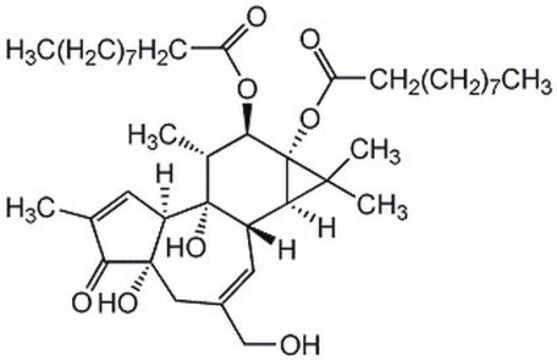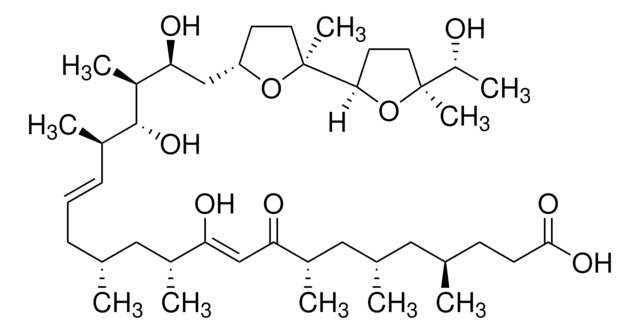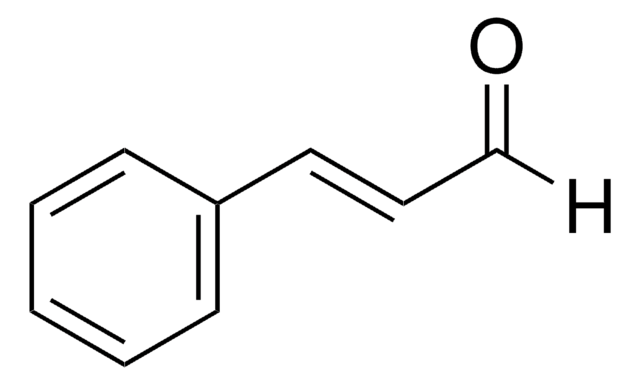P8014
4α-Phorbol 12,13-didecanoate
solid
Synonyme(s) :
4α-Phorbol 12-13-dicaprinate, 4αPDD
About This Item
Produits recommandés
Forme
solid
Niveau de qualité
Couleur
white
Solubilité
DMSO: soluble
ethanol: soluble
methanol: soluble
Température de stockage
−20°C
Chaîne SMILES
CCCCCCCCCC(=O)O[C@@H]1[C@@H](C)[C@@]2(O)C(C=C(CO)C[C@]3(O)C2C=C(C)C3=O)C4C(C)(C)[C@]14OC(=O)CCCCCCCCC
InChI
1S/C40H64O8/c1-7-9-11-13-15-17-19-21-32(42)47-36-28(4)39(46)30(24-29(26-41)25-38(45)31(39)23-27(3)35(38)44)34-37(5,6)40(34,36)48-33(43)22-20-18-16-14-12-10-8-2/h23-24,28,30-31,34,36,41,45-46H,7-22,25-26H2,1-6H3/t28-,30+,31-,34-,36-,38+,39-,40-/m1/s1
Clé InChI
DGOSGFYDFDYMCW-OEFRVDPMSA-N
Vous recherchez des produits similaires ? Visite Guide de comparaison des produits
Application
- to study its effects on Madin-Darby canine kidney (MDCK) cells
- to study its effects on Ca2+ influx in mice fallopian tubal cells
- to study its effects on hind paw swelling in mice
Actions biochimiques/physiologiques
Attention
Reconstitution
Mention d'avertissement
Danger
Mentions de danger
Classification des risques
Acute Tox. 1 Dermal - Acute Tox. 1 Inhalation - Acute Tox. 2 Oral - Carc. 2 - Resp. Sens. 1 - Skin Corr. 1B - Skin Sens. 1
Code de la classe de stockage
6.1A - Combustible acute toxic Cat. 1 and 2 / very toxic hazardous materials
Classe de danger pour l'eau (WGK)
WGK 3
Point d'éclair (°F)
Not applicable
Point d'éclair (°C)
Not applicable
Équipement de protection individuelle
Eyeshields, Faceshields, Gloves, type P2 (EN 143) respirator cartridges
Certificats d'analyse (COA)
Recherchez un Certificats d'analyse (COA) en saisissant le numéro de lot du produit. Les numéros de lot figurent sur l'étiquette du produit après les mots "Lot" ou "Batch".
Déjà en possession de ce produit ?
Retrouvez la documentation relative aux produits que vous avez récemment achetés dans la Bibliothèque de documents.
Les clients ont également consulté
Articles
Carcinogenesis and Epigenetics
Notre équipe de scientifiques dispose d'une expérience dans tous les secteurs de la recherche, notamment en sciences de la vie, science des matériaux, synthèse chimique, chromatographie, analyse et dans de nombreux autres domaines..
Contacter notre Service technique















